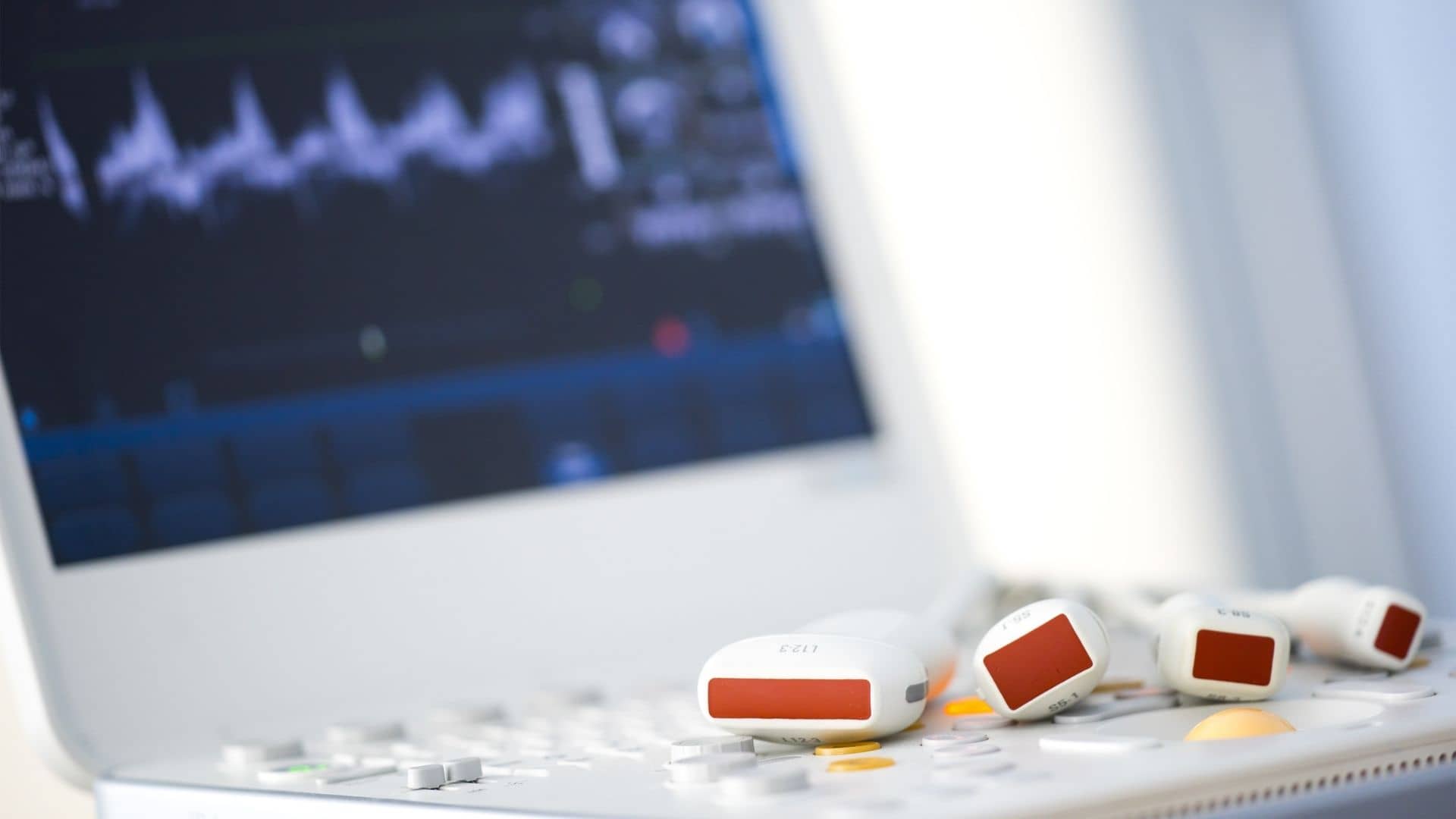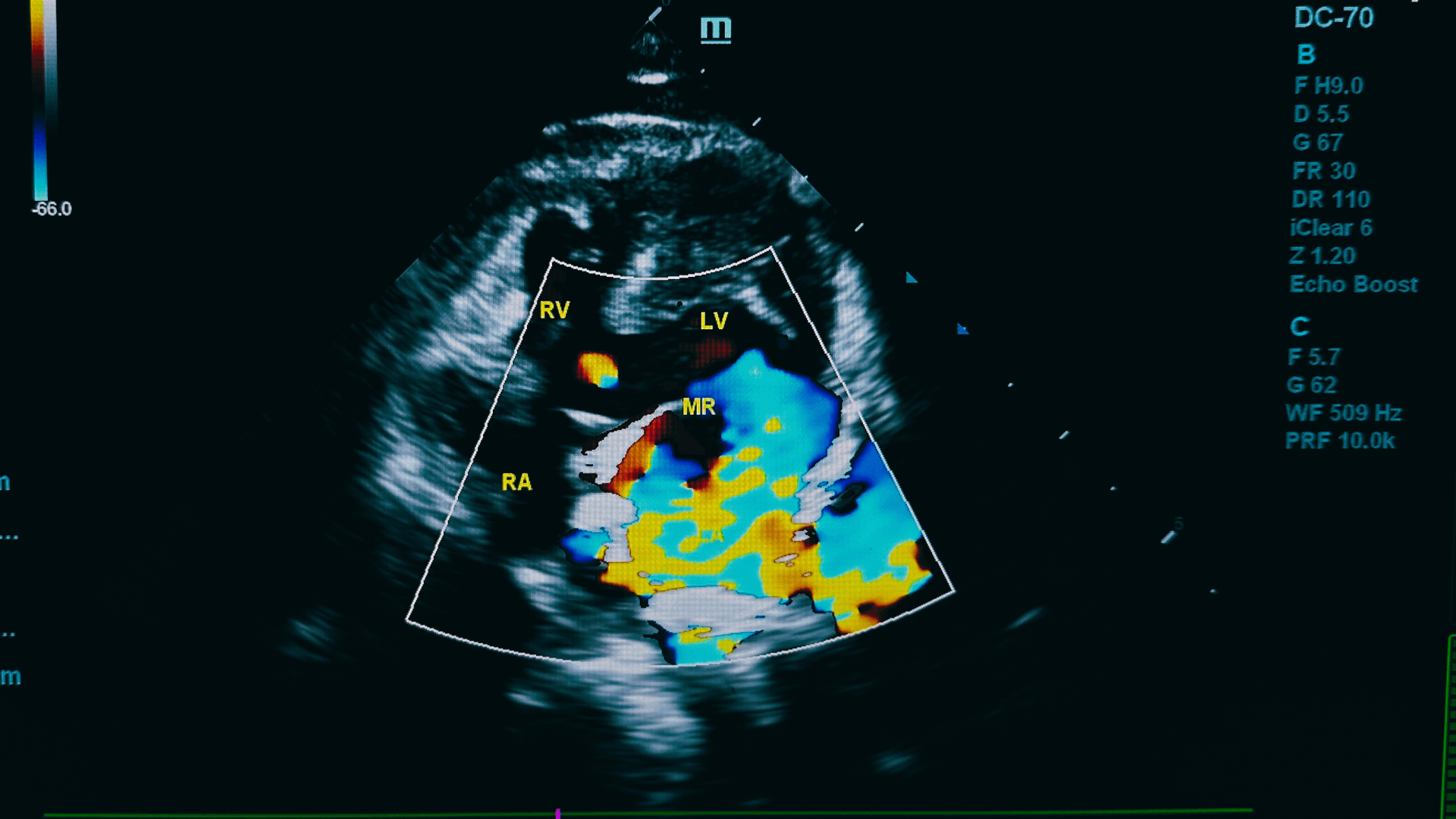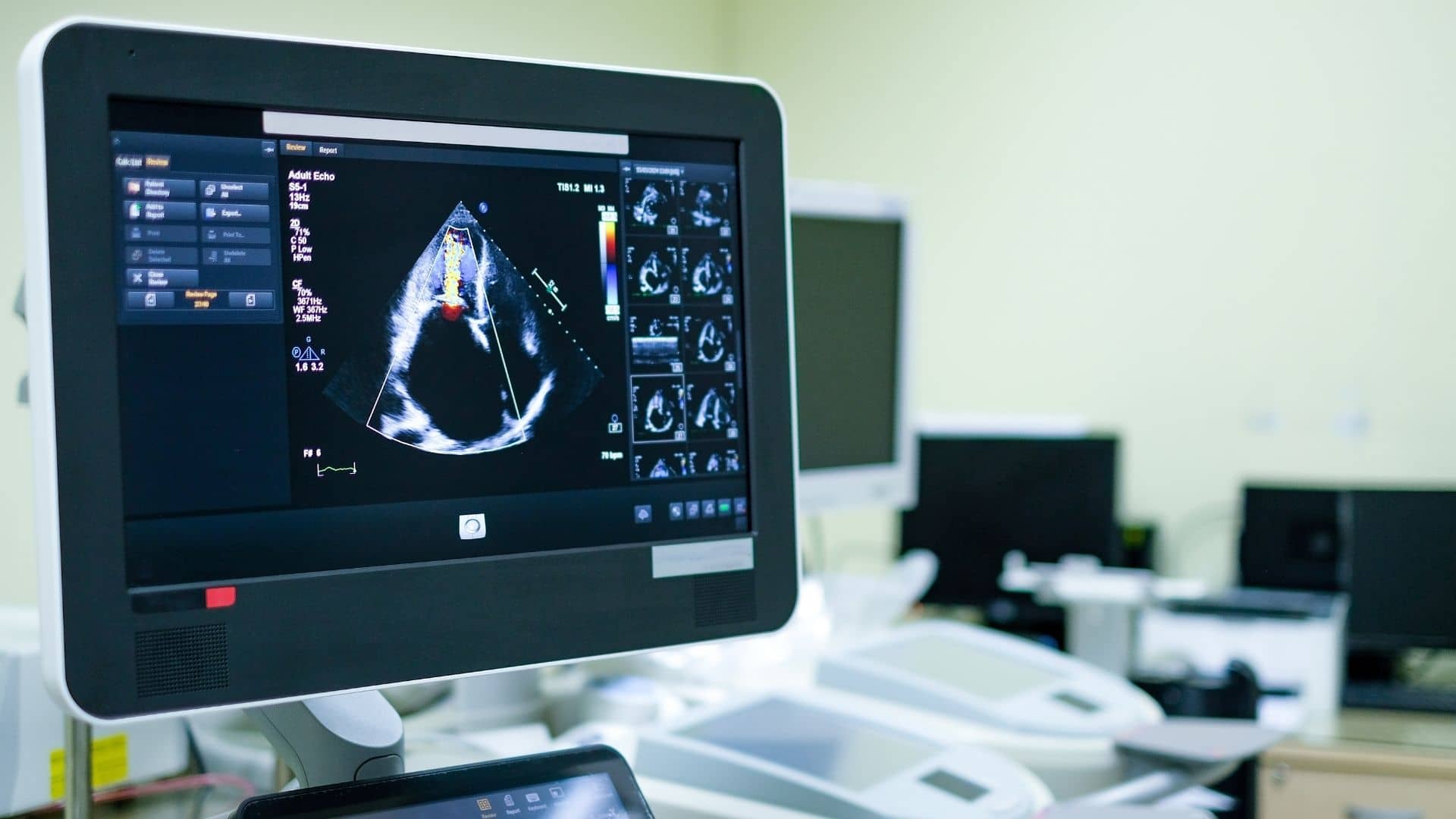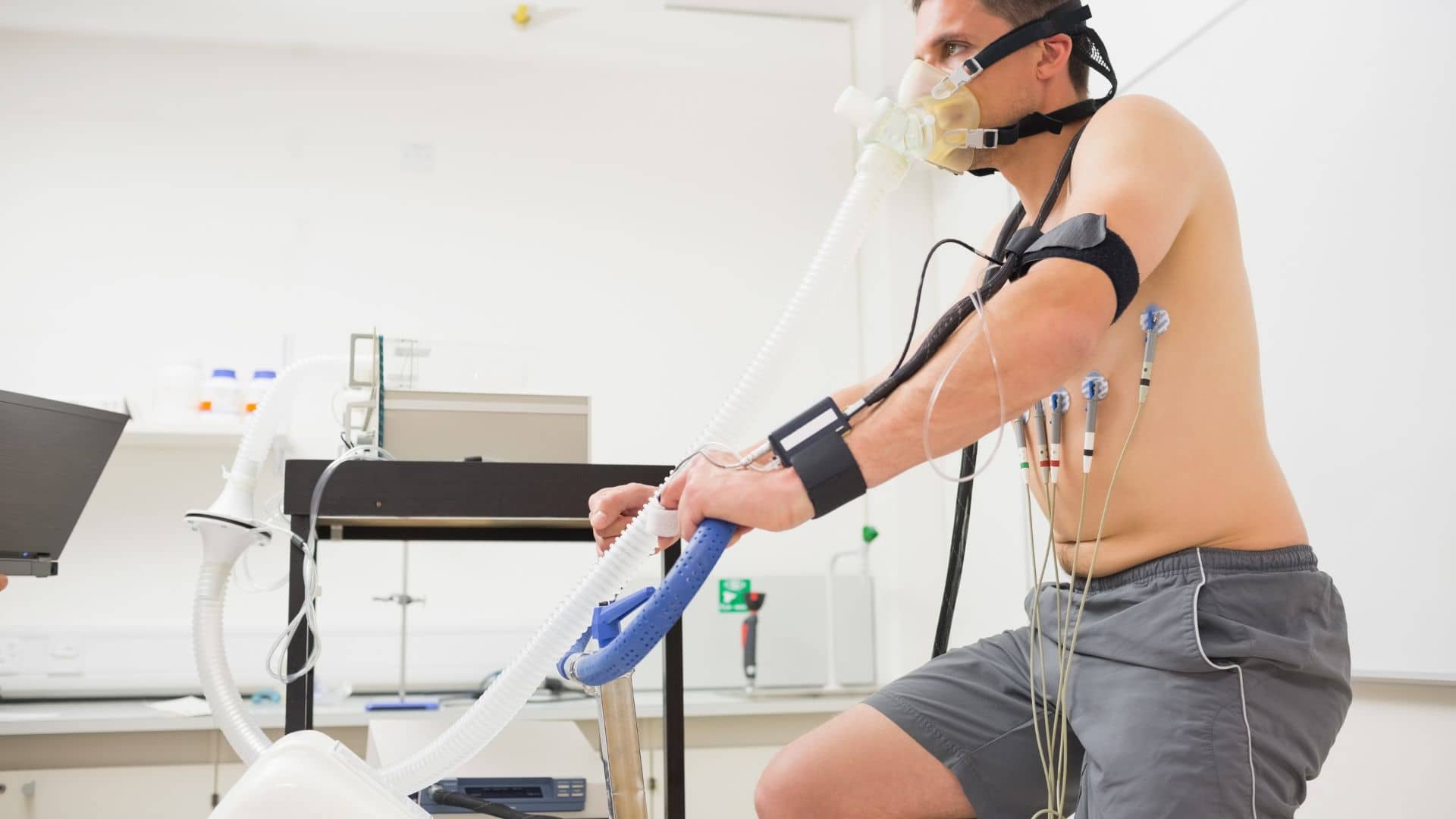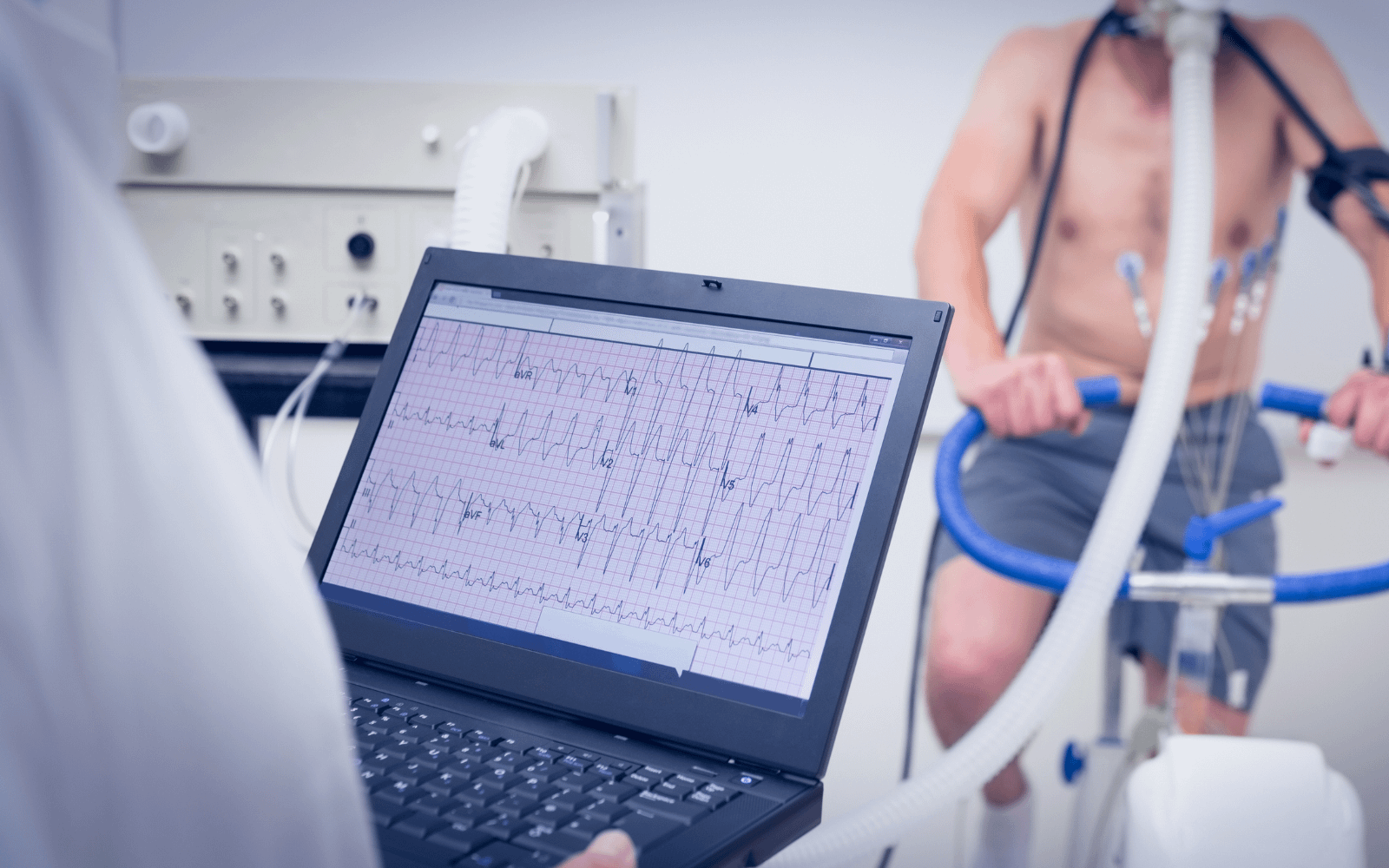Did you know that over 6.2 million stress tests are performed annually in the United States?
Yet nearly 23% of claims face denials due to incorrect coding. From years of my experience, I’ve seen many practices struggle with proper documentation and billing for cardiovascular procedures like the 93017 CPT code.
And for many cardiovascular diagnostics, this code is a really important component. Many practices lose revenue because of incorrect coding and billing practices.
When Is The 93017 CPT Code Used?
CPT Code 93017 is used when a doctor reads and interprets the results of a cardiac stress test. It doesn’t include running the test or hooking the patient up to the equipment—that’s the technical part.
Instead, it only covers the physician’s review of the data and their written report explaining what the test results mean.
The reason why it’s important is because many providers accidentally bill this code by thinking it includes the entire test. But the 93017 only applies to the interpretation, which is the final step after the test is completed.
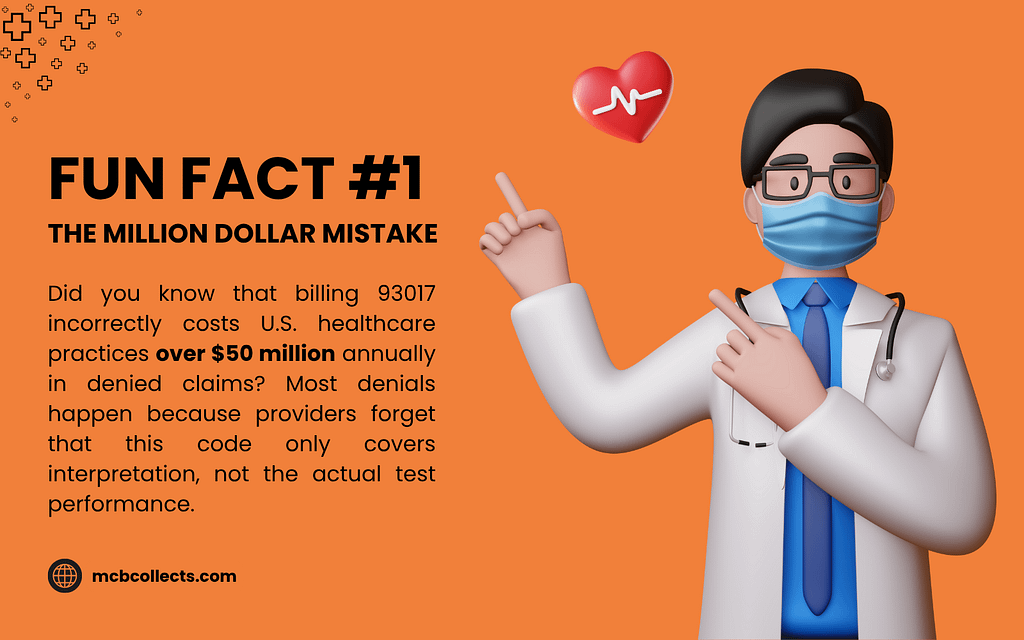
What is the 93017 CPT Code?
93017 CPT Code covers the professional interpretation of cardiovascular stress testing results. This code applies when a physician reviews test data and creates a written medical report.
Healthcare providers use this code for the reading portion only. The actual test performance gets billed with different codes.
If you need help with complete stress test procedures, you can check out our article about the 93015 CPT code for full testing protocols.
CPT Code 93017 Basic Information
Code Element | Details |
CPT Code | 93017 |
Category | Medicine – Cardiovascular |
Code Type | Professional Service |
Billable Status | Active |
Medicare Coverage | Yes (with proper documentation) |
Typical Setting | Outpatient, Hospital |
When to Use 93017 CPT Code?
Healthcare providers use CPT 93017 in specific clinical situations. The code applies when a physician provides interpretation services for stress testing.
The physician must review all test data completely. They create a written report with clinical findings and recommendations.
Appropriate Use Cases | Documentation Required |
Stress test interpretation | Complete written report |
Data analysis and review | Clinical correlation notes |
Medical decision support | Treatment recommendations |
Follow-up care planning | Patient safety assessment |
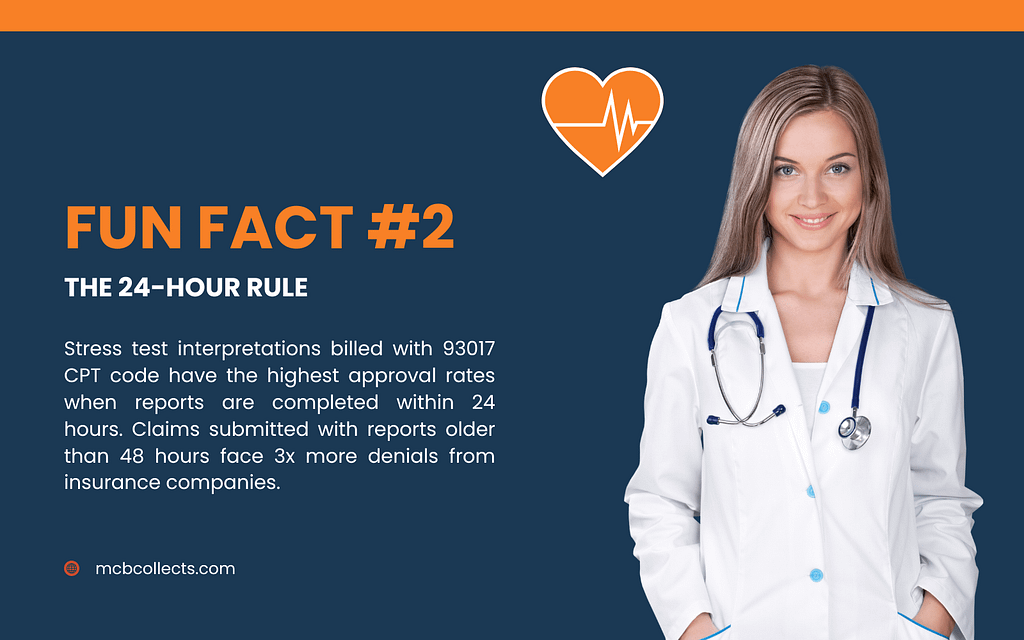
Documentation Requirements for CPT 93017
Proper documentation protects against claim denials. Insurance companies review medical records to verify the service provided.
The physician must document their complete interpretation process. Records should show thorough review of all test components.
Required Documentation | Specific Elements |
Patient identification | Full name and date of birth |
Test date and protocol | Type of stress test performed |
Complete interpretation | All findings and measurements |
Clinical correlation | Connection to patient symptoms |
Recommendations | Follow-up care instructions |
Physician signature | Licensed provider verification |
For guidance on proper medical documentation practices, you can check out our article about F99 diagnosis code documentation requirements.
Billing Guidelines for 93017 CPT Code
CPT 93017 follows specific billing rules. These guidelines help avoid common billing errors and claim denials.
The code cannot be billed with certain other procedures. Understanding these restrictions prevents payment issues.
Billing Rule | Application |
One unit per interpretation | Never bill multiple units |
Professional component only | Technical component separate |
Modifier -26 when appropriate | Interpretation only services |
Same-day restrictions | Check bundling rules |
Common Billing Errors with 93017 CPT Code
Medical billing staff often make mistakes with this code. These errors lead to claim denials and delayed payments.
The most common error involves billing without proper interpretation documentation. Insurance companies frequently deny these claims.
Common Error | Solution |
Missing interpretation report | Document complete findings |
Incorrect modifier use | Review -26 modifier rules |
Bundling violations | Check CCI edits |
Insufficient clinical correlation | Include symptom analysis |
If you’re dealing with billing challenges, you can check out our medical billing consulting services for expert assistance.
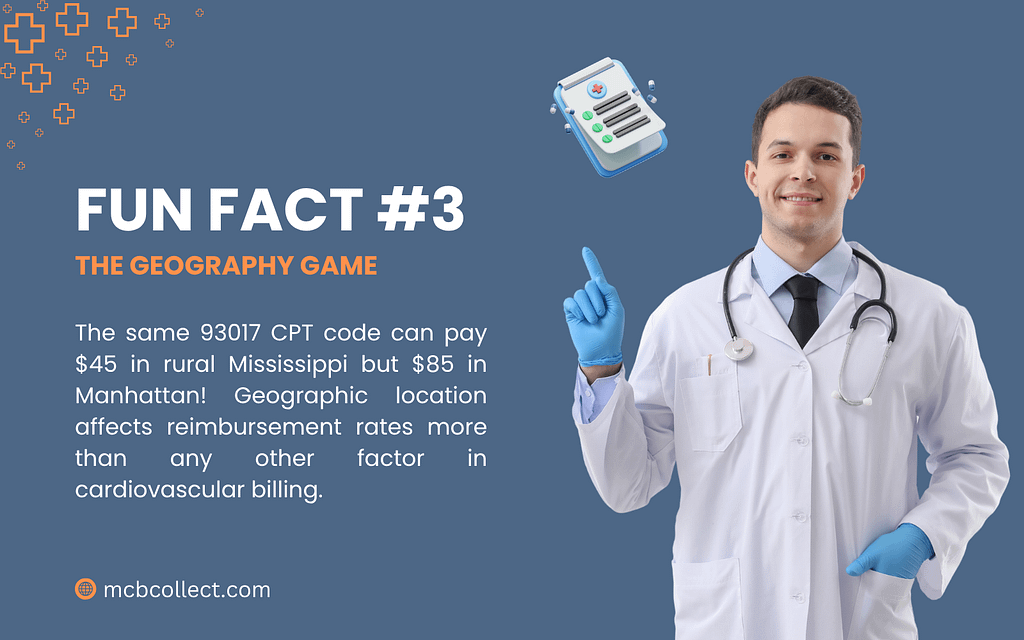
Insurance Coverage for CPT 93017
Most insurance plans cover 93017 CPT Code when medically necessary. Coverage depends on proper documentation and medical indication.
Medicare covers the procedure with specific requirements. Private insurance plans generally follow Medicare guidelines.
Insurance Type | Coverage Details |
Medicare Part B | Covered with medical necessity |
Commercial Insurance | Usually covered |
Medicaid | State-dependent coverage |
Worker’s Compensation | Case-by-case basis |
Reimbursement Rates for CPT 93017
Reimbursement varies by geographic location and insurance type. Medicare sets the baseline rates for most payers.
The national average Medicare rate provides a reference point. Commercial insurance often pays higher rates than Medicare.
Payer Type | Average Reimbursement |
Medicare | $45-65 nationally |
Commercial Insurance | $60-90 typically |
Medicaid | $35-50 average |
Cash Pay | $75-125 range |
For help with revenue cycle optimization, you can check out our revenue cycle management services page.
Related CPT Codes
Several CPT codes relate to cardiovascular stress testing. Understanding these relationships helps with proper billing.
Some codes bundle together while others bill separately. Knowing these rules prevents billing errors.
Related Code | Description | Billing Relationship |
93015 | Complete stress test | Cannot bill together |
93016 | Technical supervision | Separate component |
93018 | Complete with interpretation | Cannot bill with 93017 |
93350 | Stress echocardiography | May bill together |
If you need help with technical supervision billing, you can check out our comprehensive guide about the 93016 CPT code for complete oversight procedures.
Step-by-Step Process for 93017 Billing
Here’s the exact process I follow when billing the 93017 CPT code. This method has reduced our denials significantly over the past year.
Step 1: Verify the stress test was completed and all data is available. You need complete test results before starting interpretation.
Step 2: Review all test components including EKG strips, vital signs, and patient symptoms. Missing data affects interpretation quality.
Step 3: Write your interpretation report within 24 hours of test completion. Timely reporting improves claim acceptance rates.
Step 4: Include specific measurements and clinical findings in your report. Vague statements don’t meet documentation requirements.
Step 5: Connect your findings to the patient’s clinical presentation. This clinical correlation supports medical necessity.
Step 6: Submit the claim with appropriate modifiers if you only did the interpretation. Use modifier -26 for professional components only.
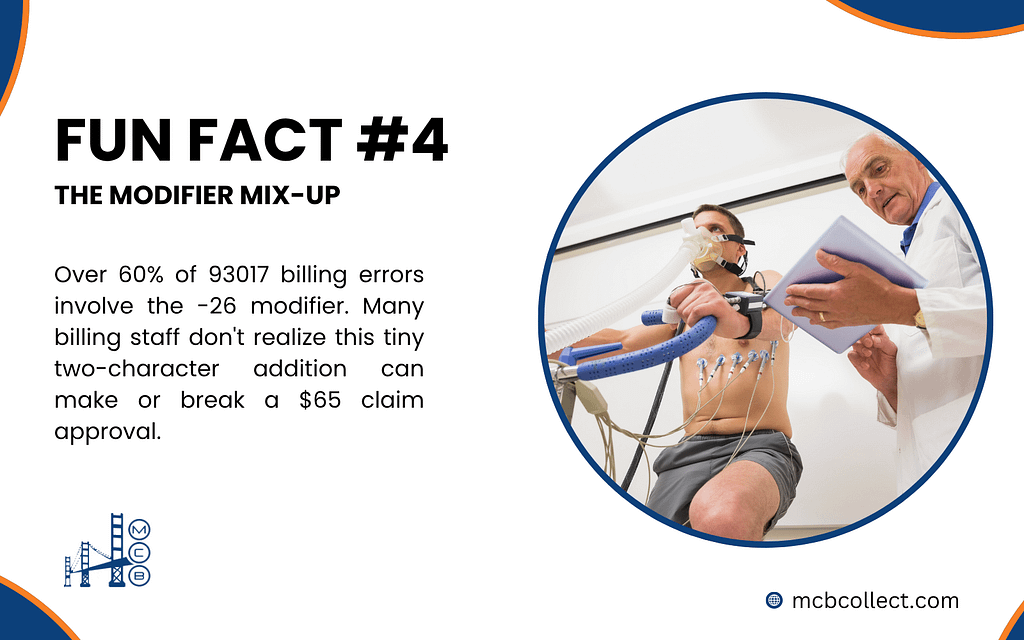
Common ICD-10 Codes Used With 93017
The 93017 CPT code must be paired with appropriate diagnosis codes. Here are the most common ones from my practice experience:
ICD-10 Code | Description | When to Use |
I25.10 | Atherosclerotic heart disease | Known coronary disease |
R06.00 | Dyspnea, unspecified | Shortness of breath |
R06.02 | Shortness of breath on exertion | Exercise-related symptoms |
Z51.89 | Other specified aftercare | Follow-up testing |
Chest pain codes are also frequently used with stress test interpretations. Heart rhythm disorders often require stress testing for proper evaluation.
You can find more information about mental health diagnosis codes in our ICD-10 codes mental health guide.
Common Denial Reasons
Insurance companies deny CPT 93017 claims for several reasons. Understanding these reasons helps prevent future denials.
The most frequent denial involves lack of medical necessity. Proper documentation addresses this issue effectively.
Denial Reason | Prevention Strategy |
Medical necessity | Document clinical indication |
Missing authorization | Obtain prior approval |
Incomplete report | Include all required elements |
Wrong modifier | Use -26 when appropriate |
For expert help with denial management, you can check out our denial management services to reduce claim rejections.
Best Practices for CPT 93017
Following best practices improves claim acceptance rates. These practices also reduce administrative burden on your staff.
Staff training on proper documentation helps avoid common mistakes. Regular audits identify potential problems before they become costly.
Best Practice | Implementation |
Staff education | Regular training sessions |
Documentation audits | Monthly record reviews |
Prior authorization | Verify requirements |
Clean claim submission | Review before sending |
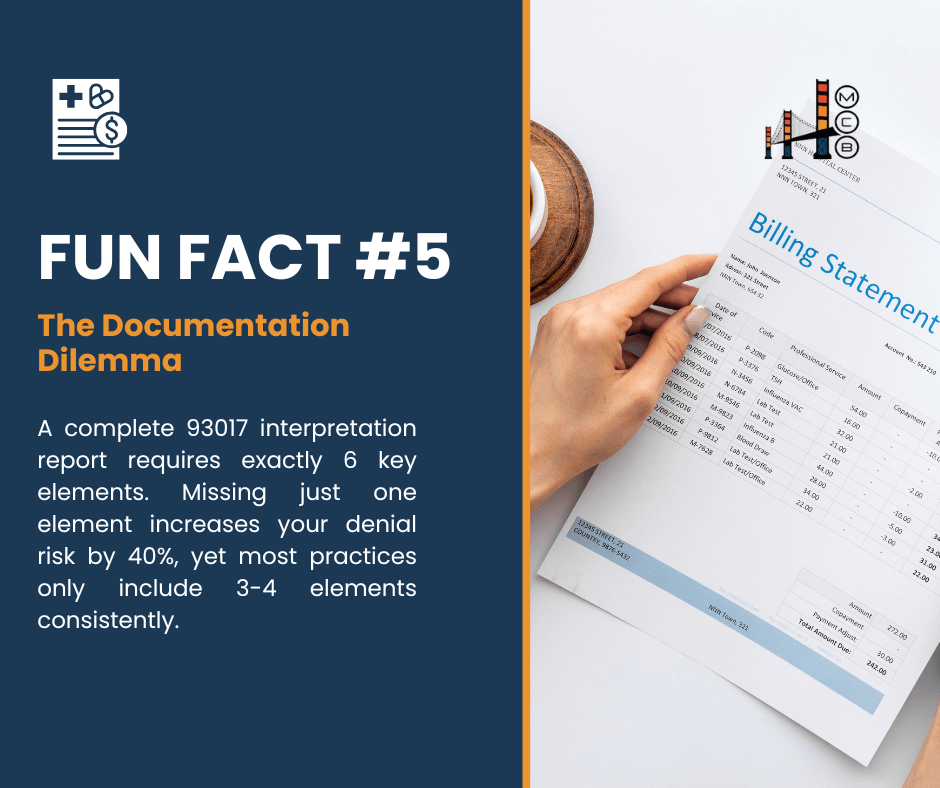
Quality Measures and Reporting
Healthcare facilities often track quality measures for stress testing interpretation. These measures help improve patient care and billing accuracy.
Tracking denial rates identifies billing problems early. Regular reporting helps maintain high performance standards.
Quality Measure | Target Goal |
Claim acceptance rate | >95% |
Documentation compliance | 100% |
Prior authorization completion | >98% |
Report turnaround time | <24 hours |
For detailed reporting and analytics, you can check out our medical billing reporting solutions page.
Training Your Staff on 93017 CPT Code
Your billing staff needs complete understanding of the 93017 code. Most billing errors come from staff confusion about what this code covers.
Create standard checklists for your team to follow with each claim. Practice scenarios help staff understand different billing situations.
Monthly training sessions keep everyone updated on coding changes. Review denied claims together to learn from past mistakes.
Training Topic | Frequency |
Code definitions | Monthly |
Documentation requirements | Quarterly |
Denial prevention | Monthly |
Compliance updates | As needed |
Technology Integration
Modern EHR systems help with CPT 93017 billing processes. These systems automate many billing functions and reduce manual errors.
Integration with billing software improves overall efficiency. Automated coding suggestions help reduce common mistakes.
Technology Feature | Benefit |
Automated coding | Reduces manual errors |
Documentation templates | Improves completeness |
Real-time eligibility | Prevents coverage issues |
Electronic claims | Faster processing |

Compliance Considerations
HIPAA compliance remains essential for all medical billing activities. Patient privacy protection applies to all billing processes involving the 93017 CPT code.
Audit trails document all billing activities completely. These records help during insurance reviews and compliance audits.
Compliance Area | Requirements |
HIPAA Privacy | Patient information protection |
Audit documentation | Complete record maintenance |
Staff training | Regular compliance education |
Security measures | Data protection protocols |
For complete HIPAA compliance support, you can check out our HIPAA compliance services page.
Mental Health vs Cardiovascular Billing
While the 93017 CPT code focuses on cardiovascular interpretation, many practices also handle mental health billing. The documentation standards differ but remain equally important.
Mental health codes like 90791 CPT code and 90834 CPT code require different documentation types. Cardiovascular codes like 93017 need more technical data and specific measurements.
Cross-training your billing staff enables them to handle both claim types effectively. Separate workflows for mental health and cardiovascular billing reduce staff confusion.
Credentialing Requirements for 93017
Not every physician can bill the 93017 CPT code legitimately. Insurance companies have specific credentialing requirements for cardiovascular interpretations.
Most insurance companies prefer board certification in cardiology. Internal medicine physicians can often bill this code with proper training documentation.
Hospital privileges may be required for some insurance contracts. Continuing education in cardiovascular medicine helps maintain your credentials.
Medical credentialing services can help navigate these complex requirements effectively.
Patient Communication About 93017 Billing
Patients often get confused about multiple bills for one stress test procedure. Good communication prevents billing disputes and improves patient satisfaction.
Explain upfront that they may receive separate bills for testing and interpretation. Provide cost estimates when possible to avoid billing surprises.
Clear billing statements help patients understand what each charge covers. Payment plans through patient payment services can help with larger balances.
I always tell patients that the 93017 code covers my time reviewing their test results. This explanation helps them understand multiple charges.
Advanced Billing Strategies
Once you master basic 93017 billing practices, these advanced strategies can boost revenue further.
Bundle billing with other cardiovascular codes when clinically appropriate. Strategic timing of claim submission can improve cash flow.
Systematic appeal strategies for denied claims need proper organization. Contract negotiation with insurance companies can improve your reimbursement rates.
Track your 93017 billing metrics monthly for best results. Look at approval rates, average payments, and processing times.
Audit Preparation for 93017 Claims
Insurance companies and government agencies regularly audit cardiovascular claims. Being prepared protects your practice from potential penalties.
Keep all documentation for at least seven years. Organize files by date and patient to speed audit responses.
Review billing patterns quarterly to identify unusual trends. Train staff on audit procedures so they know proper responses.
Common audit triggers include high volumes of 93017 claims or unusual billing patterns. Stay within normal ranges for your specialty.
ROI Analysis for 93017 Services
The 93017 CPT code can be quite profitable when managed correctly. Here’s how to analyze your return on investment properly:
Track your costs, including physician time, staff overhead, and technology expenses. Monitor collection rates to see actual revenue received.
Calculate time spent on each interpretation to determine effective hourly rates. Compare to other services in your practice for resource allocation.
Most practices find that 93017 interpretations are profitable with good collection rates and efficient workflows.

Conclusion
93017 CPT Code requires careful attention to documentation and billing practices. Proper interpretation reports and complete records help achieve claim acceptance.
Healthcare providers benefit from professional billing support significantly. Expert assistance reduces denials and improves overall cash flow.For complete medical billing support, you can visit our main medical billing services page or explore our patient payment services for better collection strategies.


